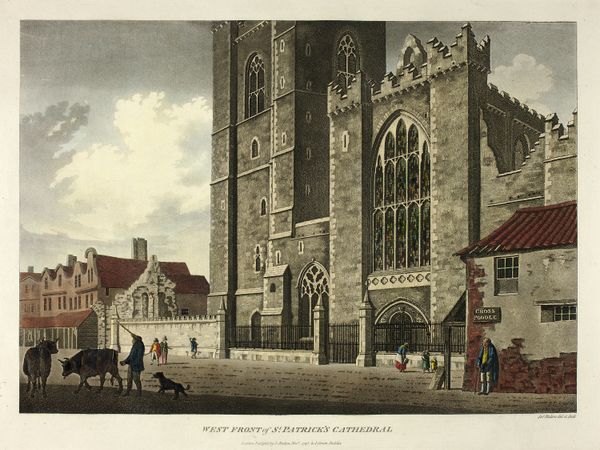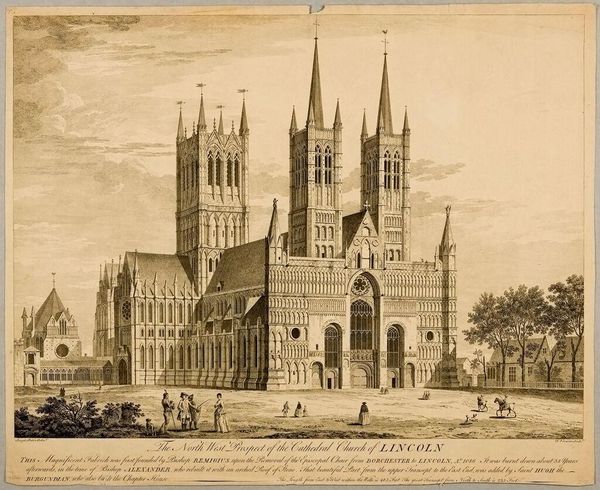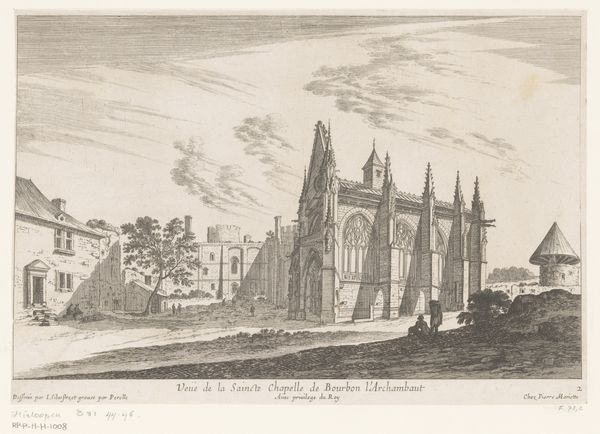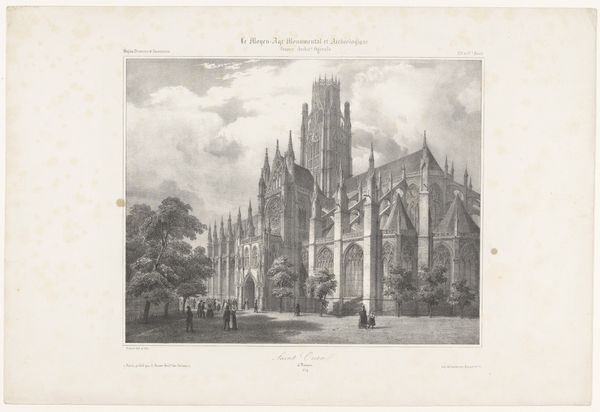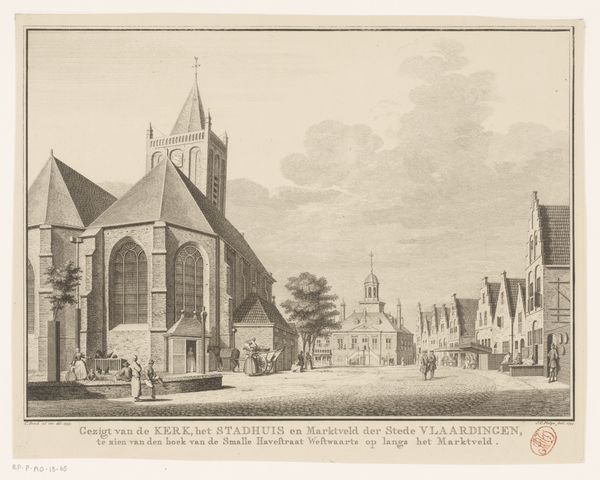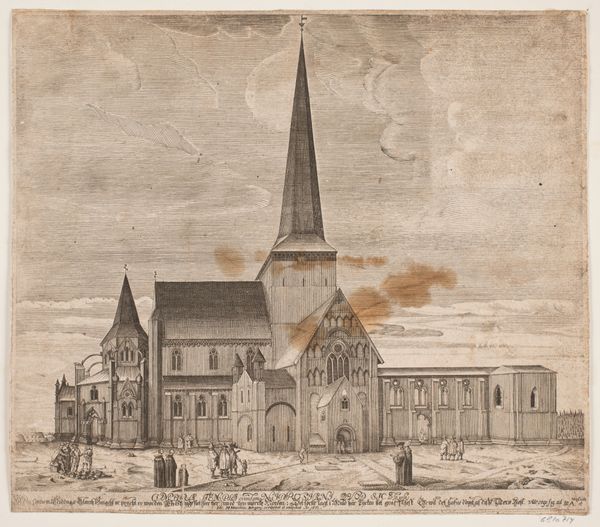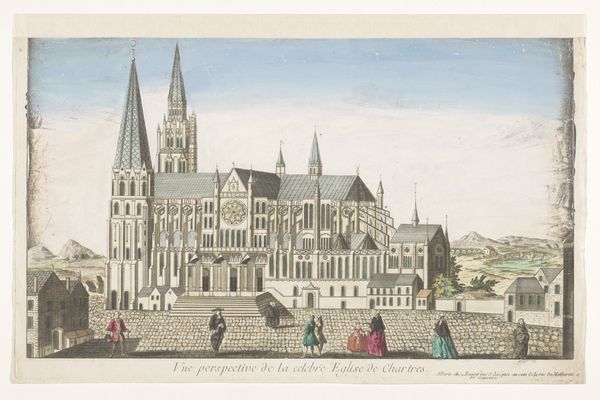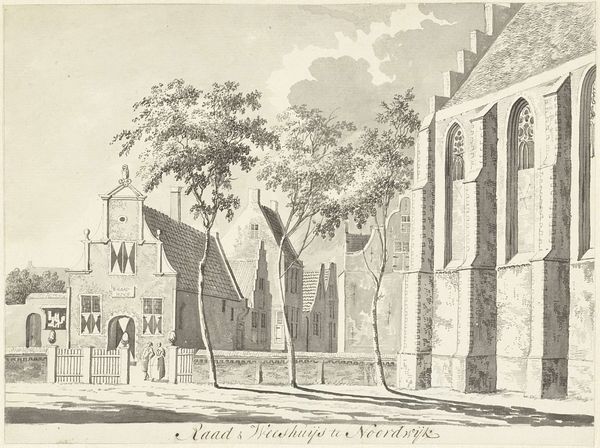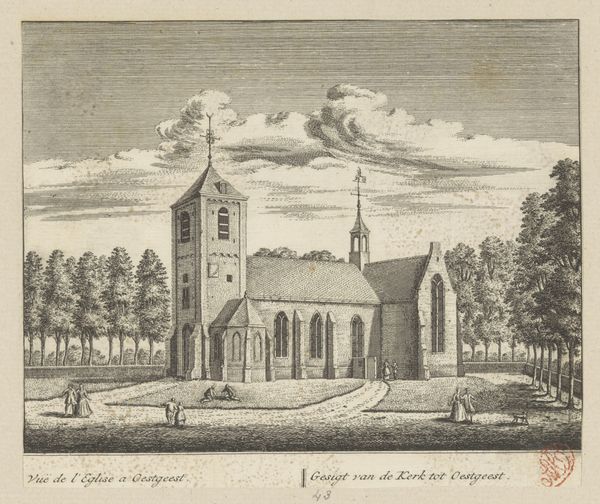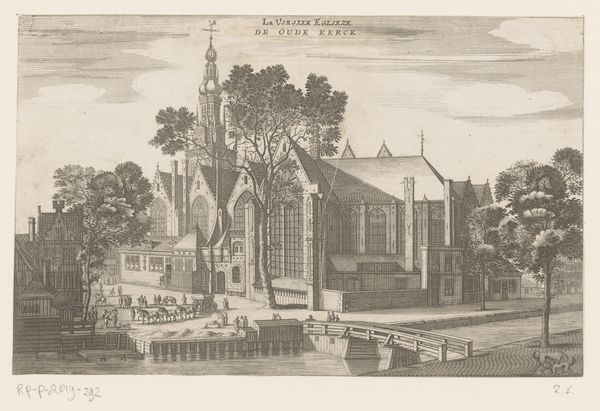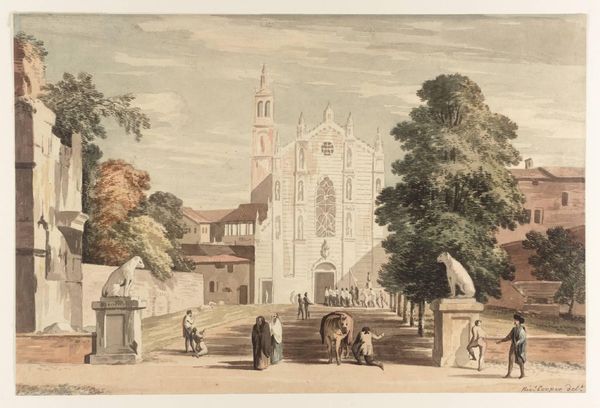
drawing, print, etching, paper, engraving
drawing
etching
landscape
paper
romanesque
19th century
cityscape
engraving
Dimensions: 263 × 375 mm (image); 315 × 425 mm (plate); 420 × 555 mm (sheet)
Copyright: Public Domain
Editor: This is James Malton's "Saint Patrick's Cathedral, Dublin," dating to around 1793. It's a print, a combination of etching and engraving, showing the cathedral in a pretty pastoral setting. I’m struck by the almost casual way the people are depicted enjoying the grounds. It feels like a commentary on the church's role within the city itself. What's your take? Curator: That’s a astute observation. Malton, publishing this print in London, taps into a key socio-political tension: the relationship between the imposing institutional presence of the cathedral – representing power and authority, often English authority – and the everyday lives of the Dubliners. Consider who might have bought this print. Was it intended for locals or a British audience eager to see a picturesque Dublin? Editor: So, it's less about pure architectural documentation and more about the image the print projects to a specific audience? Curator: Exactly. Think about the 'picturesque' aesthetic popular at the time. Notice how the cathedral is framed, not as an isolated monument, but part of a larger scene, almost nestled within the landscape with the locals adding to that scene. This makes the institution seem less separate, and more accessible. What kind of political message does that send to its original audience? Editor: Perhaps that it’s a civilizing force, integrated into the lives of the people rather than towering above them. Though the fact it's a British artist depicting an Irish landmark certainly adds layers of complexity. Curator: Precisely. The choice to represent the cathedral this way – embedded in the city life – would influence its reception and perception, shaping public opinion and the understanding of British-Irish relations. The power of the image resided in its seeming neutrality while subtly reinforcing certain ideologies. Editor: It’s amazing how a seemingly straightforward depiction can be so deeply entangled with politics and social positioning! Curator: Indeed. Looking beyond the aesthetic reveals how art operates within the public sphere, shaping, and reflecting cultural and political dynamics.
Comments
No comments
Be the first to comment and join the conversation on the ultimate creative platform.
